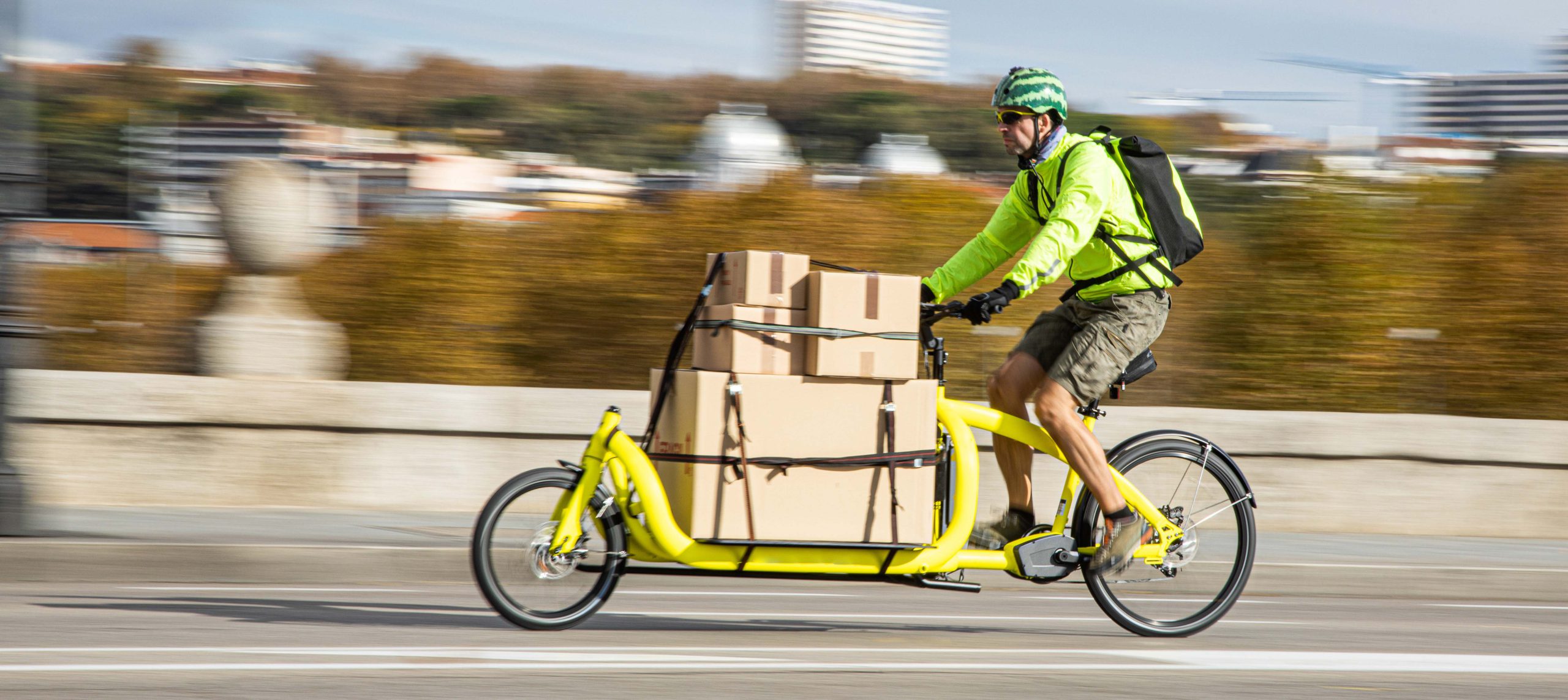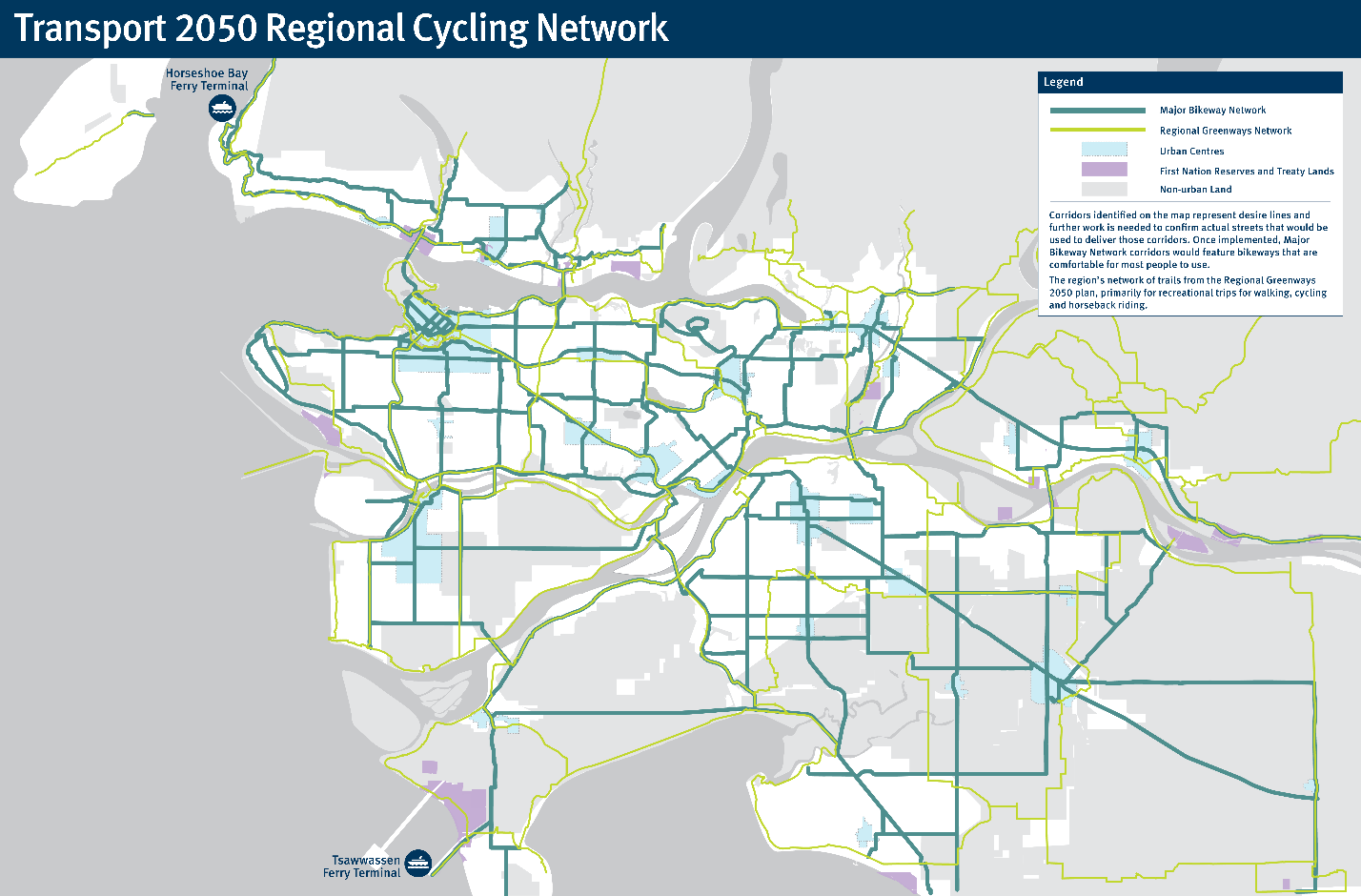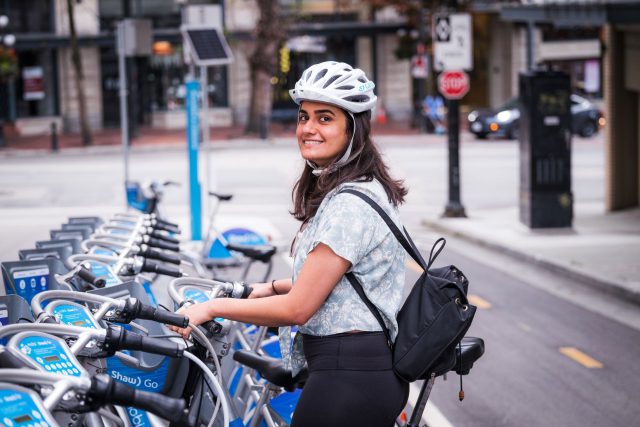Transport 2050: How the Major Bikeways Network will convince you to ride
Transport 2050: How the Major Bikeways Network will convince you to ride

Metro Vancouver is a good place to be a cyclist. With over 102-kilometres of bike lanes on TransLink’s Major Road Network, over 4,600-kilometres of bikeways and the Greenway Network there are many ways to get around safely and efficiently. However, only about 46 per cent of the region’s cycling network was assessed as “Comfortable for Most People” according to our State of Cycling Report released in 2019.
But, we want Metro Vancouver to be a great place to be a cyclist. 46 per cent isn’t high enough, we want everyone to be comfortable riding a bicycle in the region. That’s why we’re proposing an 850-kilometre Major Bikeways Network for Transport 2050. This network will be safer, easier to access, and quicker than our current systems. The network will incorporate existing infrastructure like our bike parkades, bike lanes, and greenways while being safer and more comfortable for everyone to use. The Major Bikeways Network will follow the footprint of the major roadways in the region with separated, traffic-protected bikeways.

Why cycling?
Transport 2050 is based around five key goals. We want to provide convenient, reliable, affordable, safe/comfortable, and carbon-free choices for everyone. Promoting cycling by improving infrastructure is one of the simplest and most effective ways to achieve those goals.
Cycling is convenient because you can travel independently on your own schedule. It’s reliable because you keep your bike in your own possession and they’re easy to maintain. Cycling is affordable because after the initial cost of entry, maintenance is low and parking on our system is extremely affordable. Of course, cycling is carbon-free and one of the best ways to get around whilst being environmentally conscious. Furthermore, cycling infrastructure is the most cost-effective way to add kilometres to our network. This is thanks to the ability to add cycling lanes to roadways and the limited size needed for lanes.
Cycling is safe and comfortable for some within Metro Vancouver, but our Major Bikeways Network seeks to make it so for everyone interested in cycling.
Safety
Thanks to public engagement and our lived experiences, we know that the largest perceived barrier to entry for cycling is safety. No matter your experience as a rider, nobody truly wants to be riding directly beside fast-moving vehicles. To increase safety and rider comfort the network will consist entirely of lanes that are separated from roadways by barriers. By separating cyclists from the roadway we can make our streets safer for everyone. To further promote safety, we’re focused on providing sufficient lighting across the network. Ensuring all road users can see and are aware of one another is critical in increasing safety and comfort.
Another issue we’re addressing with the current network in place is the gaps and lack of connections to urban centres. Currently, there are areas where riders have to transition from the Greenway Network onto streets and then back again. We will fill in those gaps to prevent riders from having to enter the roadways. Connections to urban centres are a major priority of the Major Bikeways Network. These changes are meant to help keep cyclists on the safer network while maintaining quick, efficient connections.
Efficiency and Accessibility
Beyond safety, we also remain focused on travel efficiency and ease of accessibility of the proposed network. We understand that in order to make cycling an option that attracts a wide range of users the infrastructure in place has to be quick and efficient. To improve travel times, we’re proposing the institution of “green waves” along the network. That means we’ll program traffic signals along the network to change in time with average cycling speeds allowing bicycles to pass through a continuous wave of green lights at intersections. Also, we’re proposing wider lanes for the network. Wide lanes would allow users to easily pass slower travelers with ease.
Such a robust network wouldn’t be complete if we didn’t consider the future expectations users will have on the system. With the increasing popularity of e-bikes and other electronic micromobility vehicles, we’re planning on integrating charging systems into our network. We’re also proposing employers be required to provide appropriate end-of-trip facilities at workplaces. These would include showers, lockers, and bike maintenance tools at workplaces to increase comfort for those who choose to ride.
Further, we’re planning on expanding our already large bike parking system. Currently, we have 11 bike parkades and bike lockers at 35 different locations across our system. But, we’re looking to expand parking to create convenient options for everyone. Further, we’re focused on providing smarter options for bike parking. Starting with our new smart bike lockers we’re going to continue to advance and improve bike parking facilities.

How things will change
The changes and diversification to the Major Bikeways Network will allow commuters to reliably choose cycling as the best way to get to-and-from work with safer, efficient, and convenient infrastructure. However, we don’t only have commuters in mind when we’re making these improvements. We’re setting out to make Metro Vancouver a more livable city with a diverse range of transportation options for everyone.
The Major Bikeway Network will empower businesses and casual cyclists alike for short trips to the grocery store or for delivering an important contract. With the increase in popularity of e-bikes we want more mail carriers, food delivery drivers and couriers to feel empowered to choose active transportation.
With improvements to cycling infrastructure, bike-share companies such as Mobi are better equipped to continue to expand their network. We’re sure to soon see e-bike rentals or ride-sharing services come to the area to take advantage.
Finally, we’re proposing a complete traffic-protected cycling network within urban cores. These isolated networks will be connected through the Major Bikeway Network and will ensure that cycling within cities is a reliable way to get around quickly.
We know personal automobiles will have their place in the future. But, Transport 2050 is setting out to provide you with more reliable, sustainable, convenient, and safe options for enjoying our region.






I’m interested in the Map of the Regional Bikeway Network for 2050, do you have this with street labels?
Cheers,
Matt
Hi Matt, unfortunately this is the only map we have of the Major Bikeways Network at the moment. If you’d like you can cross reference with our new interactive maps found here: https://www.translink.ca/schedules-and-maps/interactive-system-map